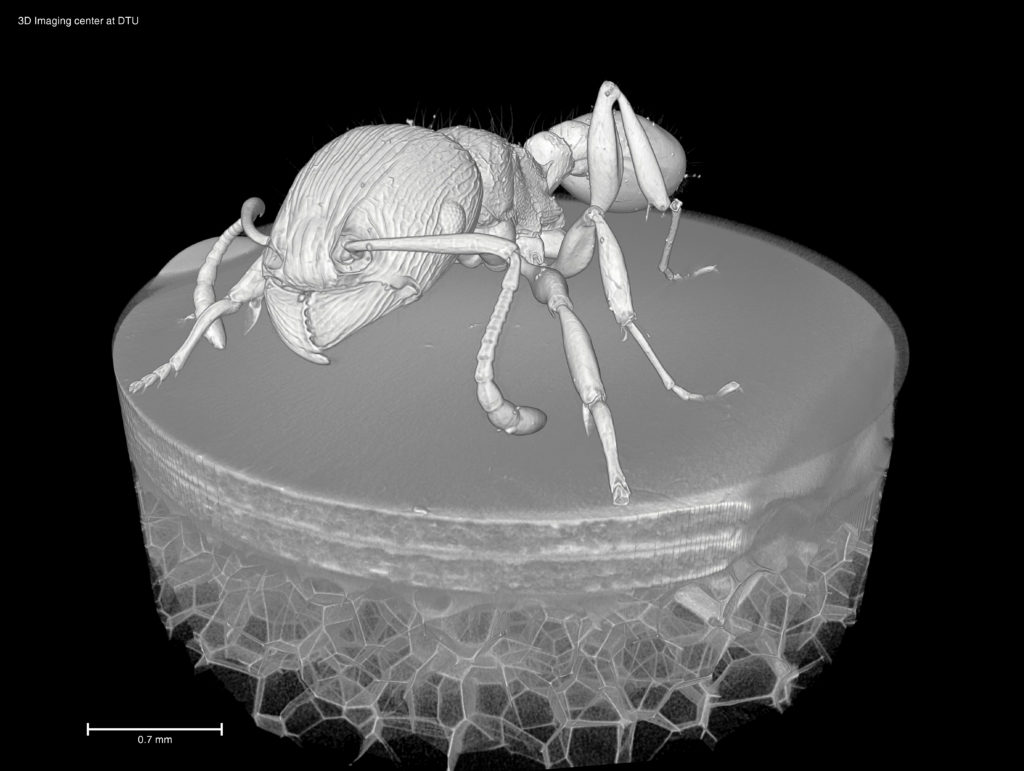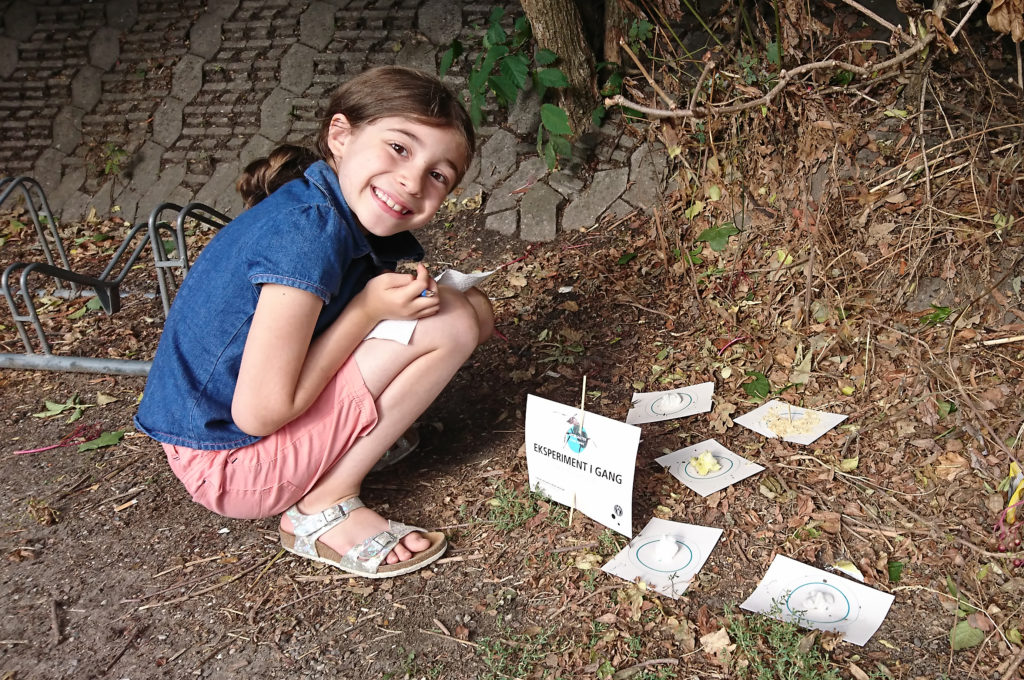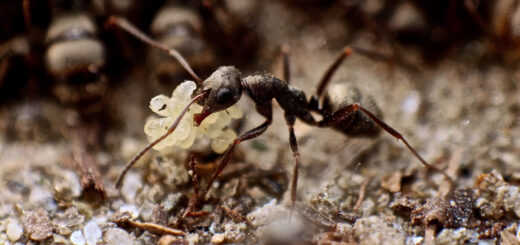Children in Denmark find new species of potentially invasive ant
Students who participated in a citizen science research project in Denmark detected Tetramorium immigrans, a new ant species in Denmark, which is potentially invasive. In this View, Rasmus S. Larsen and Julie K. Sheard talk about the project called “Myrejagten” (In English: The Ant Hunt) and share how students found not only T. immigransbut many other ant species.
A View compiled by Rasmus Stenbak Larsen and Julie Koch Sheard
Through 2017 and 2018, hundreds of families and schools across Denmark have been participating in a citizen science research project on the resource preference, distribution, and activity of ants in Denmark. By placing different kinds of resources on bait cards, participants have counted the number of ants drawn to each bait type and collected the species for identification by scientists from the Center for Macroecology, Evolution and Climate at the Natural History Museum of Denmark and the Center for Social Evolution at the Biological Institute.
One group of 5th and 6th graders (11- to 13-year-olds) conducted the Ant Hunt experiment in the Botanical Garden in Copenhagen and, without realising it at the time, helped discover a new species for Denmark: Tetramorium immigrans. Suspicion of a possible new species arose mainly due to the location of the find – at an outside picnic area in an urban setting, where you usually would not find the native, and almost identical species Tetramorium caespitum, which belongs to the same Tetramorium complex. A subsequent DNA analysis confirmed the find.

CT-scan of Tetramorium immigrans. (© Carsten Gundlach, 3D Imaging Center, DTU)
Tetramorium immigrans originates from Southern Europe, but has spread to several countries and is considered invasive in the United States and Canada, where it is commonly known as ‘immigrant pavement ant’. Until now, its most northern distribution in Europe was thought to be Wroclaw, southern Poland (Borowiec and Salata, 2018). The new find from Copenhagen pushes the northern limit for the species north by over 400 km. While exotic species in the botanical garden are common, they are usually only found inside heated greenhouses. What sets T. immigrans apart is that it was discovered outside of heated buildings in 2015 and was confirmed to be established and spreading in 2018.
Tetramorium immigrans and T. caespitum are almost impossible to distinguish morphologically and have only recently been taxonomically separated (Wagner et al. 2017). As such, the Center for Social Evolution and the Center for Macroecology, Evolution and Climate are now taking a closer look at recent finds of “T. caespitum” from Denmark, in order to determine whether T. immigrans has spread outside of the Copenhagen Botanical Garden. It is currently unknown whether the introduction has come from Europe or is a back introduction from North America, and whether or not the species will become invasive in Denmark.

7-year-old Gaïa doing the Ant Hunt in a Danish park, 2018. (© Gaïa’s mother)
The discovery is proof that children conducting citizen science experiments can help monitor changes in local biodiversity and discover new species as they appear – including those which may have the potential to become invasive, and species that are shifting their limits northwards as a result of climate change. Scientists often don’t have access to urban environments, like people’s gardens, but this is exactly where new introductions are likely to occur. This is further supported by the Ant Hunt discovery of Technomyrmex albipes in Ryvangen park (Copenhagen) during the extraordinarily hot summer of 2018. Usually T. albipes can only be found in greenhouses and heated buildings (Schär et al. 2017), whereas in this case, there were no buildings within the vicinity of the discovery site. Further investigation will determine if the species is in fact also starting to establish outside in Denmark.
Interested readers can learn more about the Ant Hunt at www.myrejagten.dk, which is in Danish but can be translated, or they can go check out the American sister project ‘Ant Picnic’ (http://studentsdiscover.org/lesson/ant-picnic/) run by The Dunn Lab of North Carolina State University. In Denmark, the project has so far led to not only the discovery and mapping of 28 species, some of which have been found in previously unknown locations, but also to some great experiences for families and schools, from which snapshots can be seen on Instagram (#Myrejagten).
Featured image: Tetramorium immigrans specimen from the Botanical Garden in Copenhagen. (© Rasmus Stenbak Larsen and Luigi Pontieri)
References
Borowiec, L. & S. Salata. 2018: Tetramorium immigrans Santschi, 1927 (Hymenoptera : Formicidae) nowy gatunek potencjalnie inwazyjnej mrówki w Polsce. – Acta entomologica silesiana 26: 1-5.
Schär, S., Illum, A. A. & Larsen, R.S. 2017: Exotic ants in Denmark (Hymenoptera: Formicidae). – Entomologiske Meddelelser 85: 101-109.
Wagner, H. C., Arthofer, W., Seifert, B., Muster, C, Steiner, F.M. & Schlick-Steiner, B. C. 2017: Light at the end of the tunnel: Integrative taxonomy delimits cryptic species in the Tetramorium caespitum complex (Hymenoptera: Formicidae). – Myrmecological News 25: 95-129.

Rasmus Stenbak Larsen in the field. Excavation of Myrmica ant colonies on the island Læsø in Denmark. (© Rasmus Stenbak Larsen)







Recent Comments